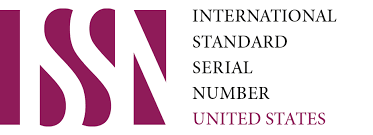Structural And Semantic Classification Of Conjunctions In English And Uzbek
Keywords:
grammar, syntax, discourseAbstract
This article explores the structural and semantic classification of conjunctions in English and Uzbek. Conjunctions, as crucial grammatical units, perform connective functions at both sentence and discourse levels. While English and Uzbek differ typologically—being an analytic and agglutinative language, respectively—both use conjunctions to express coordination, subordination, causality, contrast, and other logical-semantic relations. Through comparative analysis, this study highlights the structural forms and semantic types of conjunctions in the two languages and offers insights into their similarities and differences in use, function, and frequency.
References
Crystal, D. (2003). The Cambridge Encyclopedia of the English Language. Cambridge University
Press.
Daniyeva M.Dj. Ethnolects is the study of ethnic dialects. Current research journal of philological
sciences. USA. SJIF Impact Factor: 8.235. ISSN –2767-3758. Volume 05. Issue 02. 2024. Pages: 28-
Daniyeva M.Dj. Text as a product of discourse activity// Information technologies and automation of
learning in modern conditions. Abstracts of VIII International scientific and Practical conference.
Munich, Germany, 2024. –р. 240-247.
Halliday, M.A.K., & Hasan, R. (1976). Cohesion in English. Longman.
Haspelmath, M. (2004). Coordinating and Subordinating Conjunctions. Linguistic Typology.
Karimov, R. (2015). O‘zbek tilida bog‘lovchilar va ularning sintaktik vazifalari. Tashkent: TDPU
Matbaa.
Khaydarova, N. (2010). O‘zbek tilining grammatikasi. Tashkent: Fan.
Quirk, R., Greenbaum, S., Leech, G., & Svartvik, J. (1985). A Comprehensive Grammar of the English
Language. Longman.
Downloads
Published
Issue
Section
License

This work is licensed under a Creative Commons Attribution-NonCommercial 4.0 International License.
User Rights
Under the Creative Commons Attribution-NonCommercial 4.0 International (CC-BY-NC), the author (s) and users are free to share (copy, distribute and transmit the contribution).
Rights of Authors
Authors retain the following rights:
1. Copyright and other proprietary rights relating to the article, such as patent rights,
2. the right to use the substance of the article in future works, including lectures and books,
3. the right to reproduce the article for own purposes, provided the copies are not offered for sale,
4. the right to self-archive the article.












